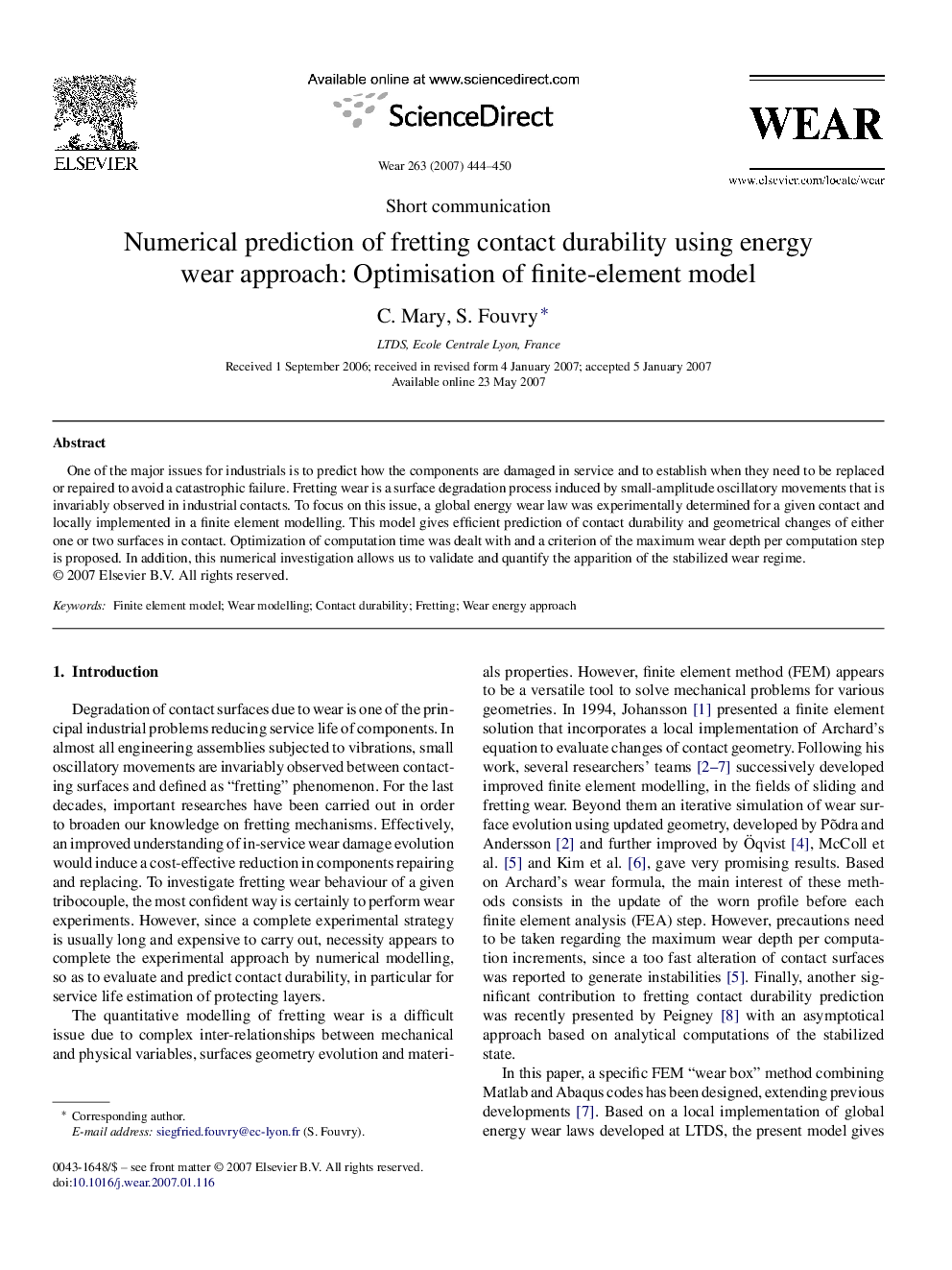| Article ID | Journal | Published Year | Pages | File Type |
|---|---|---|---|---|
| 619846 | Wear | 2007 | 7 Pages |
One of the major issues for industrials is to predict how the components are damaged in service and to establish when they need to be replaced or repaired to avoid a catastrophic failure. Fretting wear is a surface degradation process induced by small-amplitude oscillatory movements that is invariably observed in industrial contacts. To focus on this issue, a global energy wear law was experimentally determined for a given contact and locally implemented in a finite element modelling. This model gives efficient prediction of contact durability and geometrical changes of either one or two surfaces in contact. Optimization of computation time was dealt with and a criterion of the maximum wear depth per computation step is proposed. In addition, this numerical investigation allows us to validate and quantify the apparition of the stabilized wear regime.
